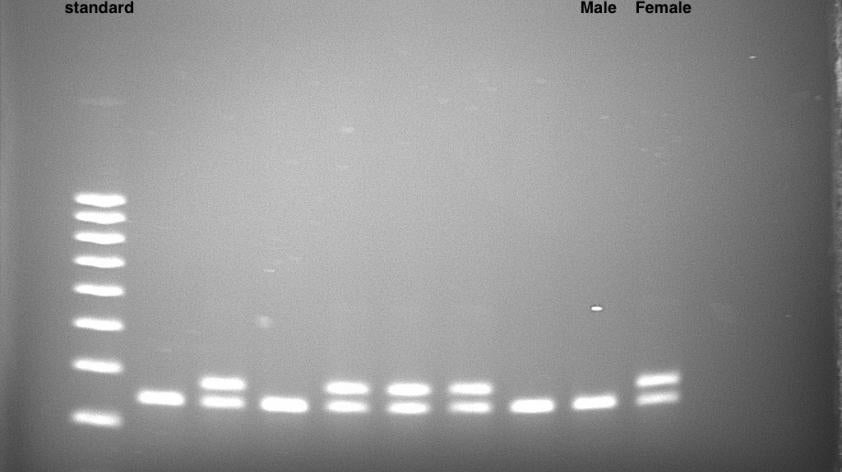
Sex determination using eggshells
Our Genetics division assists endangered species recovery programs in various ways including providing DNA sex determination of several bird species. One of our current collaborations is with San Diego Zoo Global's Hawai‘i Endangered Bird Conservation Program (HEBCP). There are currently five species of native Hawaiian birds for which we provide sex determination: 'Alala, Palila, Maui Parrotbill, 'Akikiki, and 'Akeke'e. Up until recently the Puaiohi was also on the list. Successful captive breeding at the Keauhou and Maui Bird Conservation Centers has allowed for the release of 222 Puaiohi into the wild, and just this year (2016) the last release was conducted as a result of rising numbers in the wild.
Many bird species are sexually monomorphic, meaning males and females don't exhibit any outward physical differences. This can be problematic for management purposes, particularly for captive breeding programs. Initially, determination of bird gender involved a highly invasive examination, but genetic techniques have allowed for less invasive sexing. With current methods, we can determine a bird's sex using only a small drop of blood, a feather, or a piece of eggshell membrane.
The process of genetically sexing Hawaiian birds usually begins when HEBCP staff members use forceps to carefully peel off the membrane from eggshells of recently hatched chicks. The samples are then shipped to our lab here at the San Diego Zoo Institute for Conservation Research. We perform a kit-based DNA extraction by adding a piece of the eggshell membrane to a tube with enzymes, and incubating it in a water bath to release the DNA contained within the cells of the tissue. After several steps of removing contaminants and washing the sample, pure DNA is available for use in the next step, the polymerase chain reaction (PCR). During PCR amplification, only a small amount of the DNA is required to obtain millions of copies of the particular DNA region of interest. Birds have a sex-determination system like the XY system of humans, but in birds, it's the females that are the heterogametic sex with chromosomes ZW, while the males are the homogametic sex with chromosomes ZZ. We amplify a gene that is found in both males and females and is able to show variation in DNA sequence length between the two sex chromosomes.
The final step is to run the PCR products in an agarose gel in a process known as electrophoresis. Here, the DNA separates within the gel depending on the size of the fragment produced during PCR. The gene amplified from a female’s W chromosome is longer and produces a different size fragment compared to the DNA fragment produced by the Z chromosome. The males, therefore, show only one band while females show two distinct bands in a gel. Sex is easily determined by comparing PCR products from the chicks with the bands seen in a known male and female control of the same species.
The recovery of these Hawaiian bird species depends heavily on the collaboration of biologists from both in-house and outside institutions spanning various disciplines. The team in Hawaii is currently preparing for its first 'Alala release. Since 'Alala are monogamous, they aim to release an equal ratio of males and females to give the population the best chance of successfully establishing in the wild. We hope our continued support of these efforts to develop sustainable populations of endangered species can lead to as successful a conservation story for the 'Alala as it did for the Puaiohi.













